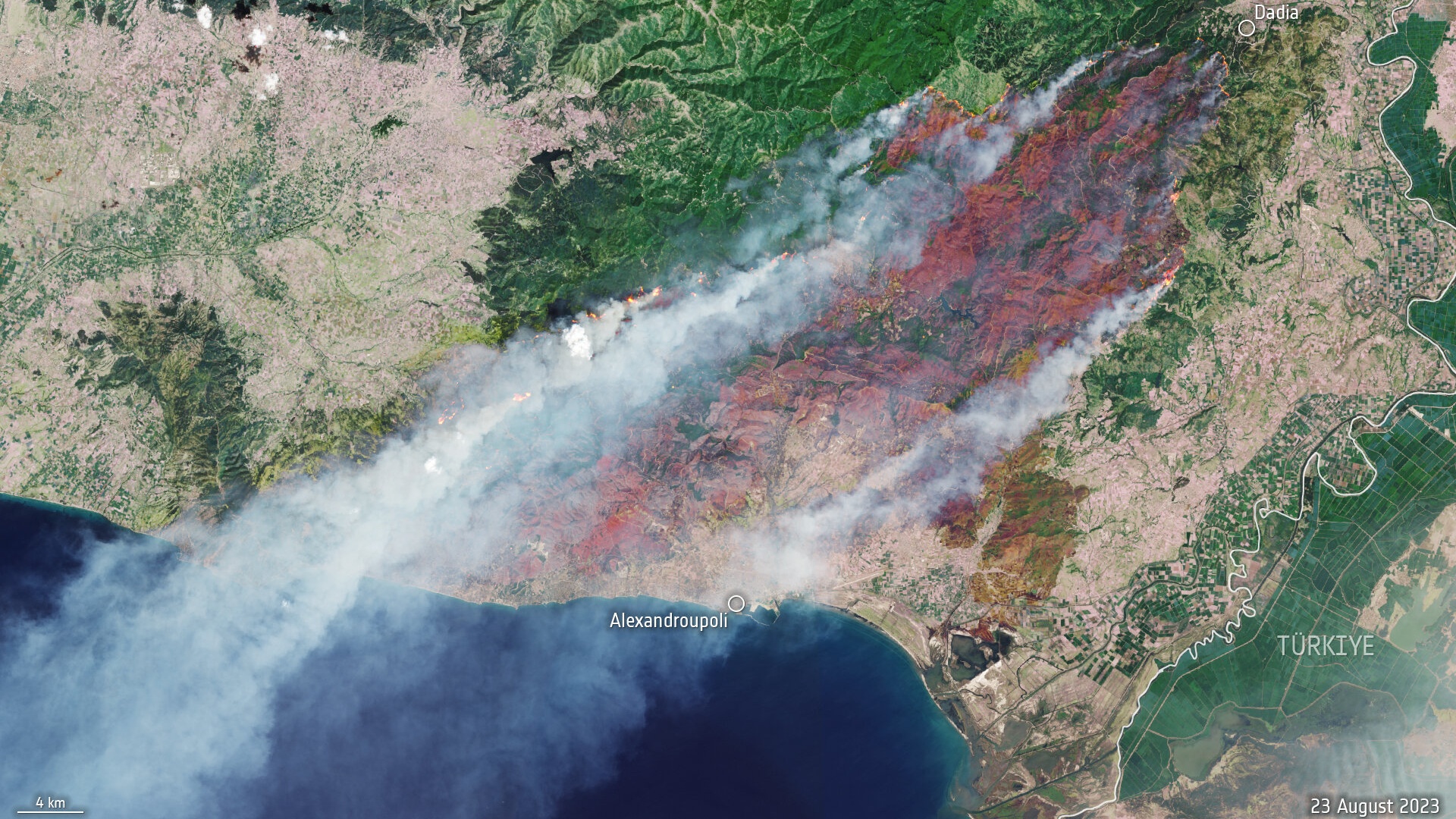Satellite imagery captures wildfires breaking across Greece (photo)
The Copernicus Sentinel-2 mission is responding to the emergency.

It's been a disastrous season for wildfires, and there's no end in sight.
Following devastating blazes on the island of Rhodes in July, more than 350 new wildfires have broken out across Greece this week, according to the New York Times. The most severe, located just outside the city of Alexandroupoli on the mainland near Türkiye, is being propelled by gale-force winds.
The fire, which has been burning for several days, was aerially captured by the European Space Agency's (ESA) Copernicus Sentinel-2 mission, a constellation of two satellites that each have a high-resolution multispectral imager to observe changes in our planet's land and vegetation. These components make the satellites particularly helpful during natural disasters like wildfires.
In the image, which is a composite indicating natural light signals and infrared wavelength patterns, the brown areas show burnt land while bright reds and oranges show the active fire front. At the time this image was taken, on Wednesday (Aug. 23), that front spanned 43.5 miles (70 km), with its smoke plumes trailing some 1,000 miles (1,600 km) towards Tunisia. The fire prompted evacuations of several villages in the region, as well as a hospital in Alexandroupoli, and has already claimed the lives of 18 people — possibly migrants who had crossed into Greece from Türkiye, per Reuters.
Given Greece's hot and dry climate, it's particularly susceptible to wildfires — and according to ESA, climate change and land-use change will only make these fires worse. Yet both variables continue to be exacerbated due to human-driven activity such as burning coal for power and cutting down trees to build infrastructure.
Related: Satellites watch wildfires rage across Canadian northwest (photos)
During natural disasters such as this one, the Copernicus Sentinel-2 mission monitors the situation and provides crucial information to civil authorities and humanitarian efforts as part of the Copernicus Emergency Mapping Service. That service is currently active in North Attica, Rodopi, Euboea Island, the Sterea Ellada region and East Macedonia.
Get the Space.com Newsletter
Breaking space news, the latest updates on rocket launches, skywatching events and more!
For more wildfire information from ESA, you can explore the Sentinel-3 World Fire Atlas, which monitors fires around the world.
Join our Space Forums to keep talking space on the latest missions, night sky and more! And if you have a news tip, correction or comment, let us know at: community@space.com.

Space.com contributing writer Stefanie Waldek is a self-taught space nerd and aviation geek who is passionate about all things spaceflight and astronomy. With a background in travel and design journalism, as well as a Bachelor of Arts degree from New York University, she specializes in the budding space tourism industry and Earth-based astrotourism. In her free time, you can find her watching rocket launches or looking up at the stars, wondering what is out there. Learn more about her work at www.stefaniewaldek.com.










